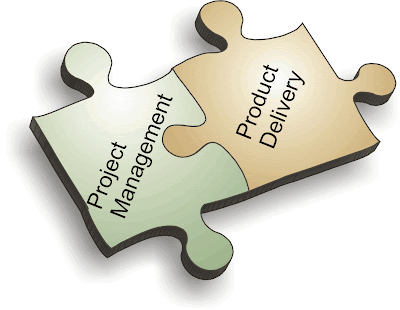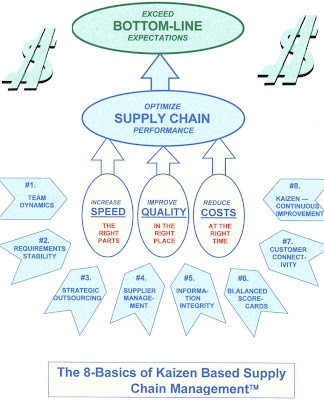
Tuesday, April 21, 2009
Project Management

Sunday, April 12, 2009
Supply Chain Management

Delivery
Pittney currently uses a third party in warehouse and distribution areas. They outsourced some areas on order to have mroe inventory control, and cut costs with dealing with multi-vendors.Pittney also uses the Internet for most of it's dealings with customers and businesses. This speeds up and reduces costs for the company as well as a good online tool for the customers in viewing the online catalogues. Some new ideas that Pitney Bowes can consider is to meet with everyone that is involved in the business process and set supply chain goals as a group. This will help to improve the entire supply chain as a whole, rather than just one portion of it.
Thursday, March 19, 2009
Quality Control

Friday, March 6, 2009
Managing Quality

Sunday, March 1, 2009
Service Process Desgin
 Service Product Bundle:
Service Product Bundle:Service Matrix:
Customer Contact:
Recovery and Guarantees:
Monday, February 16, 2009
Pitney Bowes Process Selection
Pitney Bowes contains many divisions; to focus on one division would be in the mail stream, (mailroom division). This division uses the batch flow process for general purpose equipment. An example would be the mail flow from site to site in facilities who contract Pitney Bowes for their services like the mailroom, printers and toners, shipping, accounts payable etc. Another example in the area of accounts payable that describe the batch flow would be invoice payments. It all begins where the mail is picked up in the Post Office then taken to the Pitney Mailroom to the accounts payable employees who extract the mail, edit, audit and batch. From there it's taken to another division who are specified in scanning invoices and is sent to an international country where it gets paid. Pitney Bowes primarily falls into MTS (make-to-stock). The producer specifies the product and customer request it. Any customer can order the supplies and pays for the product, whether it's from postage meter for a pharmaceutical company to a fax machine found in staples. The cell they fall into in the process characteristics matrix would be the batch and Job Shop. Why? Because the make-to-stock would include: Pitney Bowes Divisions, Stores, Companies and the make-to order/assemble-to-order would include: Mailroom, Post Office, Offices. The factors influencing their process selection would be the product flow and the type of customer order. Depending on the product and volumes required by the market effect the process selection. Pitney Bowes has actually adopted one of the methods of mass customization called (postponed). Using the postage meter as an example, lets say it were to break in one of their mailrooms. A new machine would be sent, one of the technicians would customize it whether having to come it and manually do it or with a certain software, as for payments, putting money into the meter for the postage would be through the post office who would provide it through an online system that would go to the machine or one of the mailroom employees manually dialing it on the meter.
Monday, February 2, 2009
Inventory Policy

Pitney Bowes has been able to grow and come up with strategic plans all through innovation, helping its customers create, produce, distribute and manage their mail, documents and packages. Financial Institutions, public utilities and large organizations all call Pitney Bowes when they need machinery that can sort and process mass mailings. So they decided to embark on a global customer service improvement strategy. The plan was to deploy Blackberry Wireless Handhelds built with existing CRM system, with Siebel Field Service and Antenna Software’s A3 solution. The results were better customer and business metrics, granular reporting on product performance to determine where challenges exist, inventory levels lowered by 15%; a 90% reduction in emergency parts order, 10% fewer callback visits, and improved employee access to information that increased productivity. The customer relationship management (CRM) program helps improve the overall customer experience. They wanted to integrate the technical platform to serve their service divisions: Document Messaging Technologies (DMT) and Mail stream Solutions and Services-Americas (MSSA). Businesses worldwide rely on Pitney Bowes high volume mailing systems. The MSSA also includes Multi-Vendor Services which services printers, copiers, multi-function devices, scanners, shredders, PC’s and workstations, mail stream solutions and kiosk devices from a variety of high tech manufacturers. The landscape includes Siebel Field Service for work order management and time and materials billing; SAP for parts and inventory management and contract billing; and Servisgistics for parts planning. IBM WebSphere MQ serves as the messaging middleware and the Antenna Mobility Platform (AMP) provides the mobile application and mobile middleware that integrates with Siebel, SAP and Servigistics. The system provides a simple way for field service technicians to input and retrieve real time information from the Siebel and SAP systems and enable them to link inventory consumption to service activities and products. It improved the inventory management, greater visibility into the field activities from the call center and district offices, improved the first time fix rates and increased service revenue. The AMP service provides full functionality whether in or out of network coverage like update service requests online with actual time tracker, travel and parts usage information. Pitney Bowes saved money by reducing the number of callbacks and shipping costs related to carrying costs.

http://www.youtube.com/watch?v=etAVCmI5H98
Sunday, January 25, 2009
Team 2 Pitney Bowes

Pitney Bowes was originally created in 1920 when two men, Arthur Pitney and Walter Bowes, combined their unique companies together. Arthur Pitney was the founder of the Pitney Postal Machine Company, while Walter Bowes was the founder of the Universal Stamping Machine Company. These two men worked together to create the company Pitney Bowes, which succeeded in many ways. A few of their inventions include the first ink jet postage meter, and the first in-line weighing and metering system. Pitney Bowes is the world's largest producer of postage meters; the company who also makes other mailing equipment and provides shipping and weighing systems. They are a provider of mail and document solutions as well as new innovations in the mailing industry and applications in a variety of markets, including printing, shipping, encryption and financial services. It also develops software to create mailers and manage shipping, transportation, and logistics for government agencies and corporations. Pitney Bowes is a multi-billionaire company who believes in waste reduction and recycling, energy management, renewable energy, employee involvement and education. To this day Pitney Bowes is still dedicated to making everyone’s shipping, printing, and mailing experiences much easier and cost effective.


